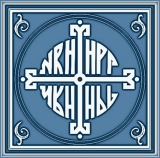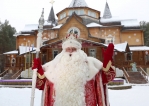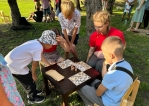Staraya Russa
Staraya Russa
The town of Staraya Russa (until the first half of the 16th century called “Rusa”) is one of the oldest Russian towns. The earliest mention of Rusa is contained in the Novgorod birch bark, relating to the second third of the XI century. The findings of salterns and birch bark letters confirm the suggestion that the ancient town developed thanks to the salt industry. The centre of medieval Rusa was located in a close proximity to open mineral springs, the use of which for the salt production can be considered the most important town-forming factor.
The waterway along the Polist and Lovat rivers, Lake Ilmen allowed its residents to actively participate in domestic and international trade. Salt was the main product supplied to the domestic and foreign markets by Rusa. It was produced by evaporating from open mineral springs located here. Until the end of the 18th century, salt industry played a significant role in the town's economy. At the beginning of the 19th century, a mineral water resort was opened here, which is still operating today.
The period of the 14-15th centuries became for Rusa, as well as for Novgorod, a time of economic and cultural prosperity. It was the time when stone churches were being built in Rusa, some of them (for example, St. George and the Annunciation, St. Mina’s) are still the main attractions of the city. Residents of the city were actively involved with various crafts, salt industry, and trade with the Hanseatic League.
After annexing to the Moscow state, Rusa continued to be strategic, political and economical centre.
In 1828, the Staraya Russa resort was officially opened. It hosted the Grand Dukes Vladimir and Alexei, sons of Alexander II, Queen of Greece Olga Konstantinovna, writers and actors, musicians and artists. Dramatic art masters performed on the stage of the Staraya Russa resort theatre – Vera Komissarzhevskaya, Maria Savina and Maria Andreeva. For sixteen seasons, the theater was directed by Konstantin Nezlobin. Konstantin Stanislavsky also visited the theatre. Maxim Gorky read his poem “Man”. The resort has nine mineral springs, not inferior in healing properties to similar springs in Germany and the Baltic states. Near the mineral springs there are lakes, from the bottoms of which unique “Starorusskaya” sulphide-silt mud with biologically active substances is extracted. It is recognized the best for its healing properties among the Russian and European resorts.
The writer Fyodor Dostoevsky has left an indelible mark in the spiritual life of the city. Here, on the bank of the Pererytitsa River, immersed in green willowy trees, stands the writer’s house. Here he finished working on the novel “Demons”, wrote first two parts of “The Adolescent”, “Pushkin Speech” and the novel “The Brothers Karamazov”.
The Staraya Russa land is the birthplace of such world-famous people as the composer, pianist and conductor Sergei Rachmaninov, painter Vasiliy Svarog, sculptor Nikolai Tomsky, the first Russian aerologist, the largest figure in aeronautics, an inventor in the field of rocketry Mikhail Pomortsev.
When the academician Dmitry Likhachev was numerously asked by Russian emigrants, of the place he would recommend to visit to “feel the Fatherland” and “see genuine Russia”, he answered: “To Staraya Russa.”




